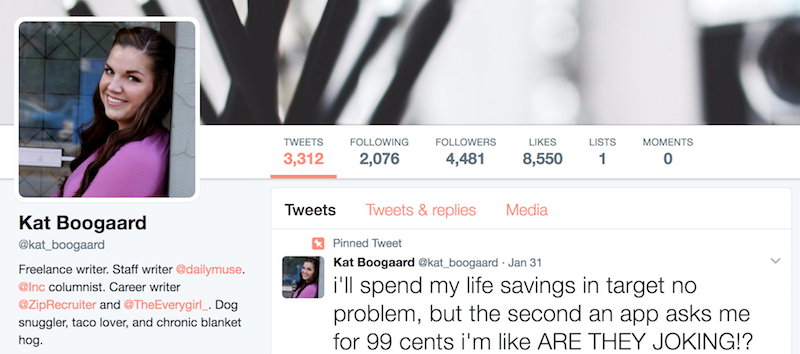Making the Most of Your Freelance Writing Pitch
Mar 27, 2017
This is part two of a four-part series on pitching as a freelance writer. For an overview of the series and easy access to every other post, click here.
You did it. You followed the instructions in this post and created a list of places you’d like to send a freelance writing pitch to. So… now what?
If you’re anything like me, you’re itching to write that email, press that “send” button, and wait for the inevitable good news to arrive in your inbox. But, pump the brakes, my friend. Before you fire off the same general pitch email to every brand, blog, or publication that makes you heart-eyed, it’s important that you lay the necessary groundwork.
Laying the groundwork before sending your #freelancewriting pitch is important: Click To TweetUgh, groan, right? But, trust me: If you do the necessary legwork now, you’ll increase your chance of success with that pitch email of yours. So, rather than investing an hour in 25 emails that get you nothing but virtual crickets in your inbox, you could invest that hour into one or two emails that might land you one job! I’m no mathematician, but I think that’s better—don’t you?
Whew, alright, now that we have that out of the way, let’s get to the meat and potatoes. What exactly should you know before you ever type a single letter of your freelance writing pitch email?
1. Follow the Instructions (Yes, All of Them!)
Answer this: If you were applying for a traditional job, would you completely ignore the application instructions? If that employer asked for you to submit your resume as a PDF, would you send a Word doc? If that company asked you to use a specific email address for your application materials, would you assume that didn’t apply to you and email someone directly instead?
Well, probably not—which means there’s no reason for you to ignore the directions when submitting a freelance pitch.
Be forewarned, there likely won’t be any submission instructions if you’re pitching a business or brand that doesn’t regularly work with contributors. However, if you’re sending a pitch to an actual publication, it’s worth checking to see if there are any instructions you need to follow. You can usually find those in the footer of the website—look for a link that says something like “Contribute”, “Write For Us”, “Submission Guidelines”, or even “Contact Us”.

If there are no submission instructions? Well, then you take your best guess of who to send your information to and the appropriate way to send it. But, don’t skip this important step of at least looking for any directions that are already outlined. Failing to abide by those will likely immediately get your email dragged to the trash folder without so much as a second glance.
2. Understand Who You’re Pitching
I receive a ton of press pitches (likely somewhere around ten each day). And, I’m always surprised by how irrelevant most of them are. I specialize in writing career and self development topics, yet I’ll receive emails from the press asking me to link to their client’s cat litter or scented candles. It’s ridiculous.
However, I see many freelance writers that fall into this same trap—they fail to understand who they’re pitching before they ever actually send that email.
What do I mean by that? Well, in order to increase your chances of success with your pitch, you not only want it to be fresh and creative—you also want it to be highly relevant.
This is going to involve rolling up your sleeves and doing some research before coming up with a few story ideas to submit to that editor. What topics does this brand or publication typically cover? Does your writing niche fit with that? What voice do they use in their existing content? Is it friendly and casual? Snarky and humorous? Very corporate and straightforward? That will be important for not only generating your pitch idea—but also an attention-grabbing headline.
The bottom line is this: Ensure that you have a really solid handle on who you’re pitching before you ever get in touch. An understanding of who they are, what they cover, and in what manner they do it in will go a long way.

3. Gather Relevant Samples
Speaking of relevance, it’s helpful if you also send relevant writing samples (I always send a few links to published work—more on that in our next post in this series!) with your pitch—provided you have some that you can showcase.
Let’s compare this scenario to a traditional job once again. If you were interviewing for a role as a data analyst, would you place a great amount of emphasis on all of the experience you have in customer service? I certainly hope not. Because—while your experience in that role might have been impressive—it doesn’t really translate to what you hope to be doing now.
The same applies when pitching a new outlet. If you’re pitching yourself to write about online marketing, would you want to include all previously published samples about home decor? If you’re aiming to contribute articles about the great outdoors, will that brand be impressed with your past work all about personal finance?
Listen, I know it can be tough to dig up relevant samples—especially when you’re just getting started and don’t have many published clips to your name. But, even if you can’t hit the nail on the head exactly, see if you can find something you’ve written and published (yes, your own blog can count!) that’s at least in a similar industry or tone.
If you don’t have anything relevant, then include samples of the work you’re most proud of. Use this is an opportunity to show off your best work.
4. Polish Your Presence
Let’s say that the person on the receiving end of your email likes your pitch. What do you think he or she will do next?
Chances are, your name is getting typed into Google right away so that your social accounts and overall presence can be perused. Do you feel confident in what you have out there?
If not, you’ll want to take some time to knock off the cobwebs and polish everything up—before sending your email! You don’t want to run the risk of waiting too long.
Make sure that your LinkedIn profile adequately reflects where you currently are in your career. If you recently switched to full-time freelancing, you’ll want to ensure that’s clearly stated. Scroll through your Twitter account to double-check for anything that could be perceived as offensive, and go the extra mile to post some industry-relevant stuff (more Twitter tips here!). And, lastly, make sure your Facebook and Instagram accounts are all rated PG—or, at the very least, confirm that they’re set to private.

I’m a big proponent of not posting anything online that you wouldn’t want a client (or your grandma!) to see. If you can abide by that golden rule, you’ll likely be able to skip this step each and every time.
INSIDER TIP: If you aren’t already following the place you’re pitching on all of your social accounts, do so now. Showing you’re already engaged with what they’re up to will be another positive for you!
Wrapping Up
When you only receive silence in response to a freelance writing pitch, it can be easy to instantly think negatively of the recipient. “How inconsiderate of them!” you mutter as you cry into your empty inbox, “Couldn’t they at least get back to me and say they’re not interested?”
However, have you ever stopped to think if you did anything that could inspire them to not respond—such as pitching topics that are way off base or failing to follow the instructions they took care to clearly outline?
I know you’re eager to just get your pitch into somebody’s hands. But, putting in the legwork ahead of time will greatly increase your success rate. And, that’s what you want, isn’t it?
Your Homework
Now for your homework assignment. Using the list of outlets you created for the homework assignment in this post, do the following:
- Peruse their websites for any application instructions and then jot those on your list.
- Take a look at the topics that outlet typically covers.
- Make any notes of tone and style you should keep in mind when crafting your pitch.
- Confirm that you’ve followed them on social.
While you’re at it, you can also take the time to peruse your portfolio and jot down any relevant samples you c0uld use when pitching!